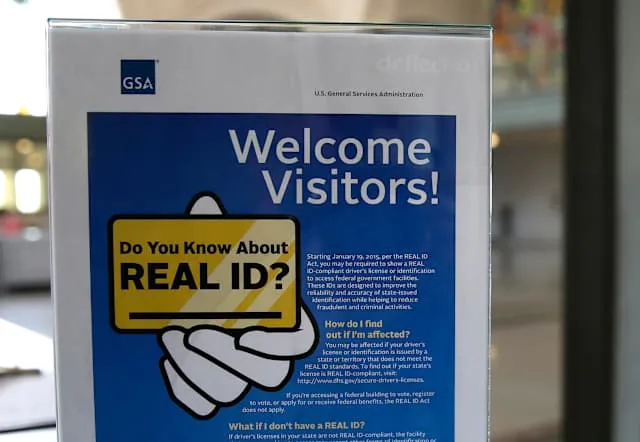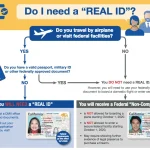As the travel landscape evolves, new regulations are set to impact passengers flying domestically within the United States. Starting May 7, travelers will need to present a Real ID-compliant form of identification to board their flights. This change is crucial for ensuring security and streamlining the boarding process. For many, this means having a driver’s license marked with a star, while others may opt for a valid U.S. passport. However, for those without a compliant ID, the Transportation Security Administration (TSA) recommends arriving at the airport three hours prior to departure to allow for additional verification.
Understanding Real ID Requirements
The Real ID Act was established to enhance security measures across the nation. It mandates that all states issue identification that meets specific federal standards. If you are unsure whether your ID is compliant, look for a star in the upper right corner of your driver’s license. This small symbol indicates that your ID meets the necessary criteria. If you don’t have a Real ID, it’s advisable to obtain one as soon as possible to avoid complications during your travels.

What to Expect Without a Real ID
Travelers presenting a non-compliant state-issued ID may face significant delays and additional screening at security checkpoints. TSA spokesperson Daniel D. Velez has emphasized the importance of being prepared: “Passengers who do not have an acceptable form of ID can expect to encounter longer wait times and may even be denied entry to the security area.” To mitigate these issues, it’s best to arrive early and bring any alternative forms of identification you may have.
Alternative Forms of Identification
While a driver’s license is the most common form of ID, there are several other acceptable alternatives. These include a permanent resident card, a border crossing card, or a Global Entry card. If you find yourself without a Real ID, gather as many forms of identification as possible that include your photo. This could help expedite the verification process, but arriving three hours early is still strongly recommended.
List of Acceptable IDs
The TSA has outlined various forms of identification that are acceptable for air travel. These include:
- Enhanced Driver’s License (EDL) or Enhanced ID (EID)
- U.S. passport
- U.S. passport card
- DHS trusted traveler cards (Global Entry, NEXUS, SENTRI, FAST)
- Department of Defense ID, including those issued to dependents
- Permanent resident card
- Border crossing card
- Federally recognized Tribal Nation/Indian Tribe ID, including Enhanced Tribal Cards (ETCs)
- HSPD-12 PIV card
- Foreign government-issued passport
- Canadian provincial driver’s license or Indian and Northern Affairs Canada card
- Transportation worker identification credential
- U.S. Citizenship and Immigration Services Employment Authorization Card (I-766)
- U.S. Merchant Mariner Credential
- Veteran Health Identification Card (VHIC)
Preparing for Your Trip
To ensure a smooth travel experience, it’s essential to check your ID status before heading to the airport. If your driver’s license lacks the Real ID star, take action immediately to obtain a compliant ID. The documents required to secure a Real ID can vary by state, but typically include a birth certificate, social security card, and proof of residency. Don’t delay in addressing this matter, as the deadline for compliance is approaching, and the TSA is serious about enforcing these regulations.
In conclusion, being proactive about your travel documentation can save you time and stress at the airport. If you lack a Real ID, plan to arrive early and bring any alternative IDs to facilitate the security process. By staying informed and prepared, you can enjoy a hassle-free journey.

